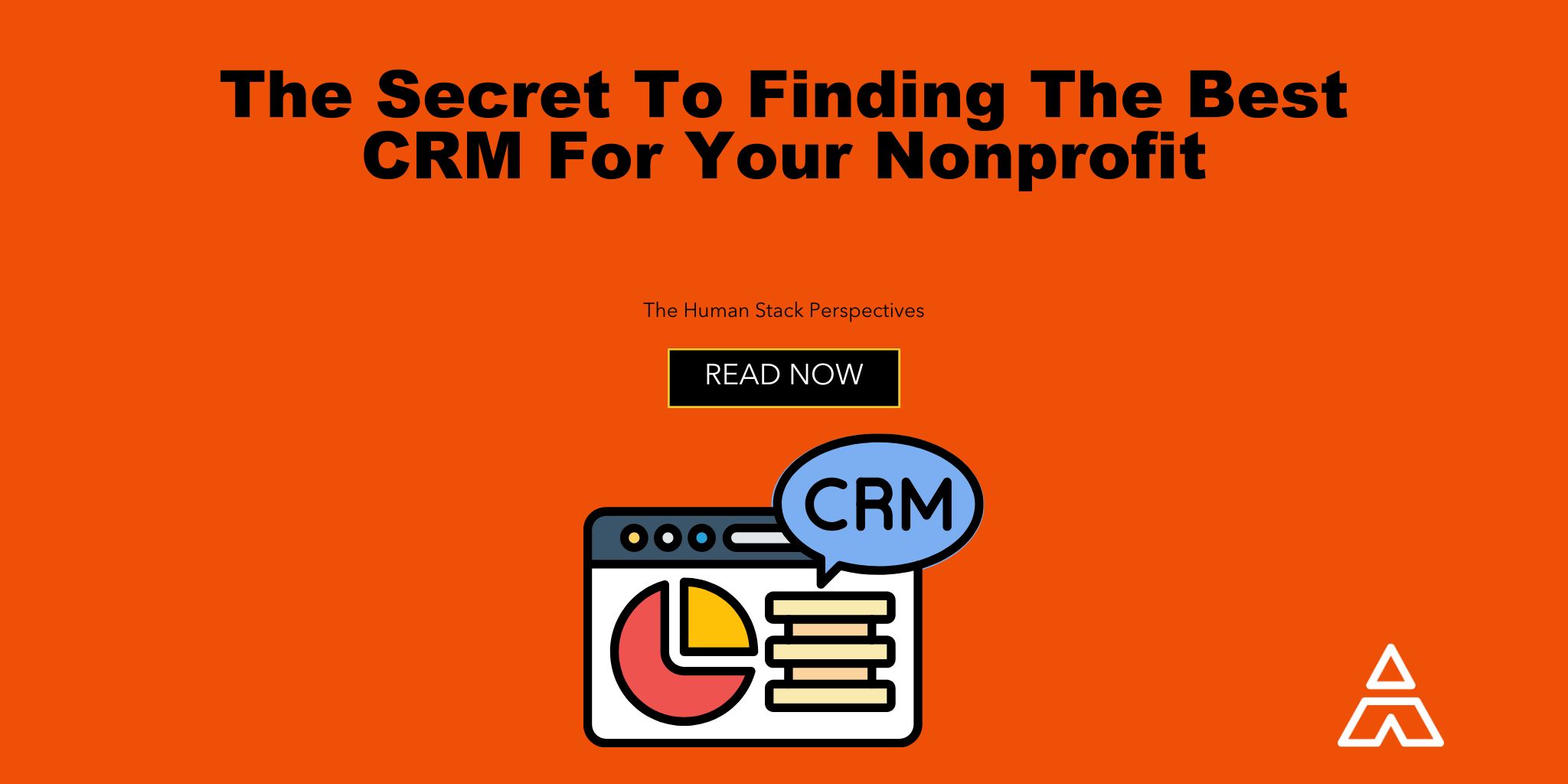4 min read
Got CRM Buyer's Remorse? Beat it Back By Getting Real With Your Nonprofit's Operations
 Tim Lockie
:
March 30, 2021
Tim Lockie
:
March 30, 2021
It strikes many nonprofit leaders after they’ve bought a new CRM system: buyer’s remorse.
The pang of regret hits when staff and leadership alike become overwhelmed during the CRM implementation process. The solutions the CRM system would solve sounded aspirational and realistic during the sales process, but now look to be drifting even farther away. Hope is circling the drain.
Everyone — from the C-Suite to the interns — is exhausted and wonders, ‘What did we just buy?’
When your CRM implementation becomes frustrating, it’s natural to look for a place to hang your blame. But the inefficiencies and frustrations that bog down an implementation aren't always because of the technology.
It’s because vision won over reality. And it happens all the time.
By slowing down your CRM implementation process to intimately understand your nonprofit’s operations (as well as the day-to-day experiences of your staff who use the CRM system) you can confidently beat back buyer’s remorse — or avoid it altogether — and ensure everyone in your organization buys-in to the investment you made.
The CRM Sales Process: Where Buyer’s Remorse Begins
From volunteer databases to donor information, a nonprofit’s CRM has to be tailored to its unique objectives for any meaningful work to get done. CRM technology companies know this fact and are dedicated to creating software that serves the needs of nonprofits.
But despite best intentions, there’s a common disconnect that sets the entire sales process off in the wrong direction: vision vs. reality.
As a nonprofit leader, you look into CRM software with a vision in mind of what it should look like for your organization.
For example, you may believe it should have an application that organizes membership programs in a certain way or perhaps adds flair to your fundraising system — something that’s different and better than what you currently have.
No one can blame you for wanting the best for your nonprofit and your staff. But when you craft your vision of how you want your CRM to be without considering the current operations of your nonprofit, the CRM tech company will design a system for your organization that doesn’t bridge the gap between current operations and your preferred new features.
The tech company is in the business of selling CRM systems that solve what their clients ask for, whether the client knows what’s right for them or not. And the tech company doesn’t know that answer (because they don’t know your organization’s operations), so they aren’t able to steer you in the right direction.
After the deal closes, you’re left with your new CRM system and a huge task before you: Translating the vision of the sale to the day-to-day operations of your organization. Cue: implementation breakdown.
If you’ve found yourself at this juncture, hold tight. There’s hope ahead.
Bounce Back From Buyer’s Remorse By Jumping Into Your Organization’s Operations
There’s no doubt you want your organization’s CRM system to provide you with great data, information, and insights. But if that reality seems far off based on your CRM implementation experience, don’t worry you can still get your CRM to where it needs to be.
You need to do some introspection first. Here’s how you can start.
- Stop and evaluate. When your staff is introduced to a new CRM system, there’s training session on top of training session — on top of their normal tasks. Talk about an overload. You, as a leader, come to a crossroads and need to figure out what’s what. Stop everything, and start a dialogue. Get your staff to open up and candidly share their thoughts and feelings about how the implementation process is going, and more importantly how it’s not. An experienced CRM implementation partner can help you set up a framework for collecting input and make sense of all the feedback.
- Ask yourself questions. Instead of wondering why the CRM tech isn’t functioning as you imagined it would consider some self-reflection. Ask questions that would help identify issues and perhaps lead to discoveries and solutions. A CRM implementation partner can help you ask clarifying questions, such as:
- What are priorities for each department, and how does that fit into the system?
- How is an issue happening? Where is its breaking point?
- What is succeeding? What is going well and why?
- Is the data trustworthy? Why or why not?
- What do staff think and what are their opinions?
- What guided the vision articulated to the sales executive?
The answer to the last question could give you surprising insight as to where a disconnect could have happened in the first place. Because if the motivations behind the vision you shared with the sales executive lacked insight from staff or other leadership, you’ve uncovered a rocky layer of disconnect between leadership and staff.
When leadership envisions one CRM system, and staff expects something different, there’s a missed opportunity for collaboration of realistic goal setting — and creating a vision for a system that serves your organization.
If you’ve invested in a CRM and grapple with buyer’s remorse, going back to your organization’s operations can help set you on a better path of understanding — and finding a better way forward for everyone. A CRM implementation partner can help identify key areas of opportunity to improve everyone’s experience with the new tech — and banish buyer’s remorse for good.
Sail Into the CRM Sales Cycle With Confidence at Your Back
If you’re about to enter into the sales cycle, there are two ways you can enter it:
- You can have a list of aspirations; a grand vision that will ultimately send you in an untenable direction.
- You can enter it confidently with knowledge and understanding of your staff’s pain points, a full picture of daily tasks and experiences with the current CRM system, and how the current operations work concerning your ultimate vision.
Your organization can keep score in the sales cycle with a well-articulated list of your inner connectivities that you rely on technology to solve. Your CRM sales representative will have an accurate picture of your organization’s inner workings and ultimately create a CRM that better fits your organization’s needs. No buyer’s remorse included.
CRM implementations are always smoother when you have confidence in a system that was tailormade for your organization. But if you’re not finding that to be the case, we can help with that.






